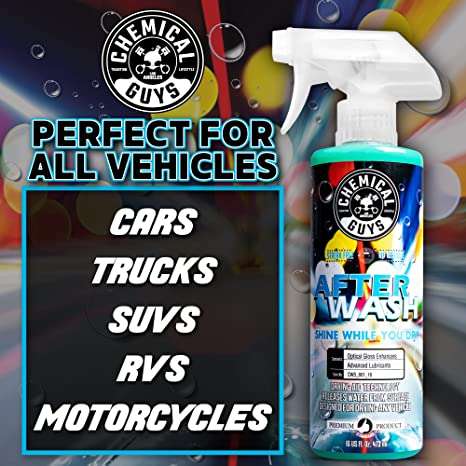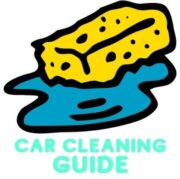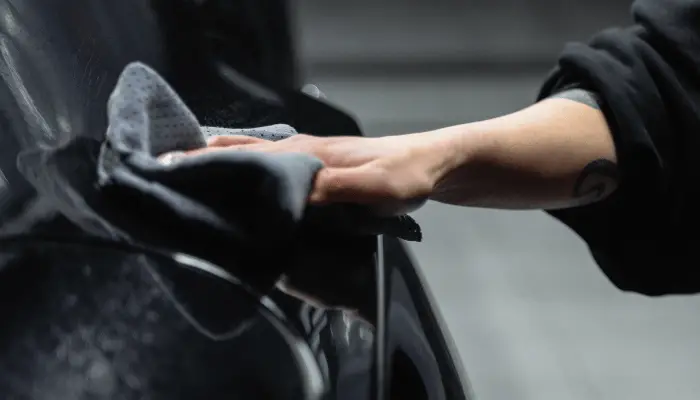- How to Clean Car Carpets Quick and Easy - July 10, 2024
- Can You Touch Up Clear Coat? Yes and No (Here’s Why) - November 25, 2023
- How To Wax A Car By Hand: A Comprehensive Guide - November 14, 2023
Last Updated on October 2, 2023 by Chase Manhattan
For most people, it’s perfectly fine to leave their freshly washed car drying in direct sunlight – and if it’s not, they’ll use a normal towel to dry their car instead. In reality, this isn’t how you should dry your car after washing it and it’s important to understand why you should and what happens when you don’t.
You may ask – what’s the problem with doing either of those things? Well, I’ll tell you exactly what here in a second. First, let me tell you what we’re going to cover in this article.
We’re going to cover:
- why it’s important to properly dry your car
- the most popular drying method
- my favorite drying method, and other alternatives
- and then some important information you’ll need throughout the process
So, as promised, here’s why it’s not ok to leave your vehicle air drying in direct sunlight, and why it’s not ok to use regular towels to dry your car.
- Direct sunlight: when you allow your car to drip dry in this way, the residual dirt in the water will remain on your car while the water evaporates. Over time, this will create what is known as water etching which is similar to the phenomenon encountered when bird poop gets stuck to your paint.
- Using normal towels: this is ill-advised because normal towels tend to hold onto small particles that will scratch painted or delicate surfaces. More so, a regular towel may be super absorbent, but the fabric will deteriorate over time leading to further blemishes in the paint surface. Out of the different types of scratches, this is one of the most common to occur.
Now that’s out of the way, let’s keep moving down the list.
[Recommended Read: How Often You Should Actually Wax Your Car]

[Recommended Article: How To Stop Rust Bubbles From Spreading On Cars]
Quick Navigation
Why Is Properly Drying Your Car Important?
It’s important to properly dry your car because, ultimately, it’s the only way to achieve a truly flawless finish.
When your car is dried with improper drying techniques, you’ll be left with water marks and residual dirt at best. At worst, you’ll find that you’ve scratched the paint’s surface from contact with unwanted materials. This is why it’s important to dry your car correctly.
Keep reading for the details you’ll need to accomplish this.
What is Water Etching?
Water etching is when a car is exposed to water, then dried improperly or neglected entirely. This occurs because there is residual dirt and other natural elements in the water that becomes embedded in the paint’s surface creating a white stain. It initially effects the car’s clear coat, but over time will continue to eat into the color and surface layers of paint.
Over time, water etching can permanently marr painted or delicate surfaces so it must be dealt with immediately.
[Recommended Article: How to Remove Scratches From Black Plastic Bumpers]

[Recommended Article: How To Clean Car Carpet Like a Professional]
Drying Your Car With Microfiber Towels
By far, the most popular drying method is to use microfiber towels. Drying your car with a microfiber towel is an excellent way to keep it looking clean and shiny. With the right technique and a little bit of help from a drying aid, you can dry your car quickly and effectively while avoiding any damage to the paint.
What Are Microfiber Towels
A microfiber towel is made up of millions of microscopic fibers, a towel specifically designed for drying cars, that absorb water and dirt more efficiently than traditional towels. They are soft, gentle on your car’s finish, and won’t scratch the paint.
When compared to something like a bath towel, they are less prone to collect debris which will help you save money in the long run when you avoid scratching your paint surface.
How To Dry a Car with a Microfiber Towel
When it comes to drying your car with a microfiber towel, the key is to use the right technique. First, shake out the towel to remove any loose particles or debris. Then, fold the towel into quarters to create multiple surfaces for drying. Start at the top of the car and work your way down, using only a few wipes per section. This will ensure that you don’t miss any spots and prevent any scratches.
[The Exhaustive Guide to Washing Your Car Without A Hose]
Why Is It Important To Use a Clean Microfiber Drying Towel?
Using clean microfiber towels is important because dirty microfiber towels will pick up dirt, debris, and excess material, like pollen on your car, that can potentially scratch the vehicle’s paint.
This is the thought behind any predominant detailing process, to do pieces of the car in sections to isolate any dirt and eliminate the chance of cross contaminations between panels. While everyone has their own technique, it’s important to be mindful of using a separate towel between panels.
What Are Drying Aids?
A drying aid is a product that helps reduce water spots and makes the towel glide over the surface of your car more easily. You can spray a small amount of the drying aid onto the surface of your car before you start drying it with a microfiber towel.
[Recommended Read: Turtle Wax: Wax and Dry Review]
I typically prefer Chemical Guys’ products, and that is the case here with their After Wash Drying Aid

[Recommended Article: Everything To Know About Washing The Undercarriage of A Car]

[Recommended Article: How To Deal with Blistering and Bubbling Car Paint]
Best Way to Dry a Car After Washing
One of my favorite drying methods is to use a dedicated car blower to completely dry the car without actually making contact with the paint. This option is great because the car dryer allows you to reach previously hard-to-reach areas while also drying larger areas in a shorter span of time. Compressed air works to push the water away while helping you to avoid scratching the car’s paint.
Drying a Car with Dedicated Vehicle Driers
Any time you’re using a dedicated vehicle drier, a blower, or any form of compressed air, be sure to work from the top of the vehicle to the bottom. This will help you efficiently remove the water without spreading it to areas that you’ve already dried. Additionally, it will help any loose debris to easily roll off the surface of the car.
[Drying Your Car with A Leaf Blower]
How To Dry a Car with a Water Blade
As with most processes here, it’s best to work from the top of the car to the bottom of the car – even with water blades. This will allow you to gather the most water with each stroke, trimming down the time necessary to completely dry your car.
Benefits of Drying Your Car with a Water Blade
While using a water blade – also known as a squeegee – is one of the lesser known drying methods, it is still an efficient option. Water blades have a flexible silicone tip that gathers the water and allows it to be efficiently moved off the surface of the car. Given the nature of a water blade, light pressure is enough to get the job done and the flexible silicone tip will help to avoid any scratches during the process.
[Recommended Article: 11 Tips to Washing and Protecting Vinyl Wrapped Cars]

[Recommended Article: How To Remove Wax from a Windshield]
How To Dry a Car and Keep it Dry After Washing
The best way to keep your car dry after washing it is to wax your car frequently. There are many benefits of waxing your car, in this case particularly the newly added layer of wax will keep your car free from water spots, dust, and other types of dirt that accumulate over time. This is due to the hydrophobic properties of the wax that seals the surface from all outside elements. Similar to wax, the benefits of ceramic coating also include these hydrophobic properties along with many others.
Can You Use a Normal Towel To Dry Your Car?
It’s not recommended to use a normal towel to dry a car. Car paint can be very sensitive to abrasions from loose materials – even your skin can scratch the paint in the right circumstances – so it’s important to use microfiber cloths or towels when available because a normal towel is prone to carrying more residual dirt that can be transferred to the surface of the car. It’s best to remember to protect your car after washing it because this is when many blemishes are created.
[How to Prevent Water Spots on Your Car’s Paint Job]
What’s The Fastest Way to Dry a Car?
The fastest way to dry a car after washing it is to use a car blower or compressed air. This is the fastest method because you can dry large areas of the car without having to worry about scratching the paint – since you won’t make contact with it. More so, the compressed air works to get into the hard-to-reach areas that you couldn’t dry manually.
Is It Ok To Let Your Car Air Dry?
While to most people, air drying your car after washing it is perfectly fine; but in reality, this can often lead to water etching in the car’s paint from leftover material that was carried by the water droplets. I personally don’t recommend this. If you must let your vehicle dry this way, make sure that it’s in a cool area away from direct sunlight.
Can You Dry Your Car With a Leaf Blower?
Yes, drying your car with a leaf blower is perfectly acceptable. Do make sure that there’s not any loose dirt, debris, or other material inside the barrel of the blower before you use it. If there is debris inside the blower, it’s likely that it will get blown onto the paint of the car which can lead to further scratches and blemishes down the line.
[How to Fix Car Scratches from Loose Material]
Can You Let Your Car Drip Dry or Air Dry?
After washing your car, you can let it drip dry or air dry; just make sure that it’s away from any direct sunlight and in the coolest area possible.
[Recommended Article: How To Get Oil Stains Off of Car Paint]


